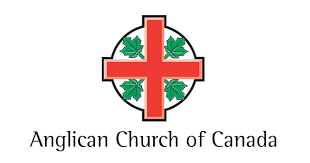The original Christian calendar was simply Sunday when the early Christians celebrated the death and resurrection of our Lord. The first feast day created by the Church was Easter. It was also the principal time for baptisms. I thought this essay was about Lent. Yes, and here is the connection.
The early Church was small in numbers and relatively unknown in the Roman Empire. It was not an established entity as the Church is today (although it is becoming lesser so). Accordingly, those who were being baptised, many of whom were adults, required a considerable amount of time for catechesis to prepare for their baptism. Their preparation included a time of fasting and prayer. Since baptism was a communal, not just an individual affair, the Church decided the rest of its members should join these catechists in their praying and fasting. But how long should everyone do this? The Church chose 40 days because Jesus fasted 40 days in the desert after His baptism.

The counting of 40 days was not as easy as you might think. There are 42 days in 7 weeks. Which two days do you exclude? Furthermore, you could not fast on Sundays because it was the day you celebrated the death and resurrection of Christ. It would be like fasting and not celebrating with a newly wedded couple at their wedding feast. It would be rude! When you excluded Sundays, you were left with 36 days in 6 weeks. Thus, the prior Wednesday (Ash Wednesday), Thursday, Friday, and Saturday were added. Wednesdays and Fridays were typically days of fasting anyways (and still are in the BCP!), so that worked out perfectly.
Where does the word Lent come from? The language of the liturgy in the West was Latin. The Latin word used for Lent was ‘Quadragesima’ which means 40th or 40 days. In Northern Europe, especially in Britain and Germany, things were different. Germans called Lent simply ‘a time for fasting’. In English, the term Lent has nothing to do with fasting or length of time. Lent comes from the old English word ‘lecte’, which means lengthening. What happens in the Spring? The days lengthen as the hours of sunshine increase. The word ‘lecte’ described this lengthening of daylight hours that was also the time you prepared for Easter.
How is Lent celebrated in our liturgy? The liturgical shift into Lent on Ash Wednesday is quite noticeable in its mood and practice. The imposition of ashes on Ash Wednesday is a relatively late development in the liturgical life of the Church. It started in the Rhineland, in the 10C where it was customary to impose ashes on oneself. The ashes come from, as you probably know, the burning of Palms that were left over from the previous year. It was customary for the priest to gather and burn the palms.
The liturgical colour for Lent is purple. The same colour may be used for the season of Advent which came much later in the Church’s history. Both Lent and Advent are penitential seasons. But Advent is less a time of fasting and abstinence, but instead, a time of thoughtful reflection on your relationship with God. Accordingly, the colour blue can be used for Advent to distinguish it from Lent. We do not use celebratory language of praise during Lent such as ‘Alleluia’ which means ‘God be praised’. Neither do we say or sing the ‘Gloria’ because of the penitential focus during Lent. In some churches, the colour changes to rose or light purple for the 4th Sunday in Lent. It is called Vitary or ‘hump’ Sunday, the halfway time in Lent when it was OK to take a break from fasting to eat some special food. It is also called ‘Mothering Sunday’ in Britain. No one knows where the term came from. Most churches use the colour red for Holy Week, black on Good Friday, and White on Easter Sunday. In some Anglican Churches, but mostly in Eastern Orthodox Churches, there is an Easter Eve (like what we do on Christmas Eve), Holy Eucharist celebration. It is also the time adult baptisms traditionally occur.
Fasting has traditionally been a major devotional practice during Lent. Why do we fast? The three pillars of Jewish practice are prayer, fasting, and alms giving. Jesus assumed we do this in His Sermon on the Mount. Fasting is a way of humbling oneself and to get ready for Good Friday and Easter. When you are mourning, reflecting on your sins, it is inappropriate to enjoy a feast. Fasting also gets us off our autopilot mode in life. We assume we must eat something when we feel like it just like when we go to the bathroom when we feel the need. Of course, we cannot go without eating altogether for a long period of time. But we certainly can withhold unnecessary eating as we often do between mealtimes. That is why it is common to not eat dessert type foods (chocolate, ice cream etc.) during Lent. Still, some may choose to forgo a meal a day (even two!) every day during Lent. Other things we can give up are the times we spend on social media, watching TV, or on our phones and tablets to, instead, pray, contemplate, read Scripture.
To conclude, let us not forget Shrove Tuesday, the day we traditionally eat pancakes and sausages. Why this practice? Typically, during the Middle Ages, people did not eat dairy and meat products during Lent. Therefore, the Tuesday before Ash Wednesday was a good time to clear out your cupboard and enjoy a feast. The idea of eating pancakes originates in England when people would clear out their dairy products and make pancakes, or something similar.

